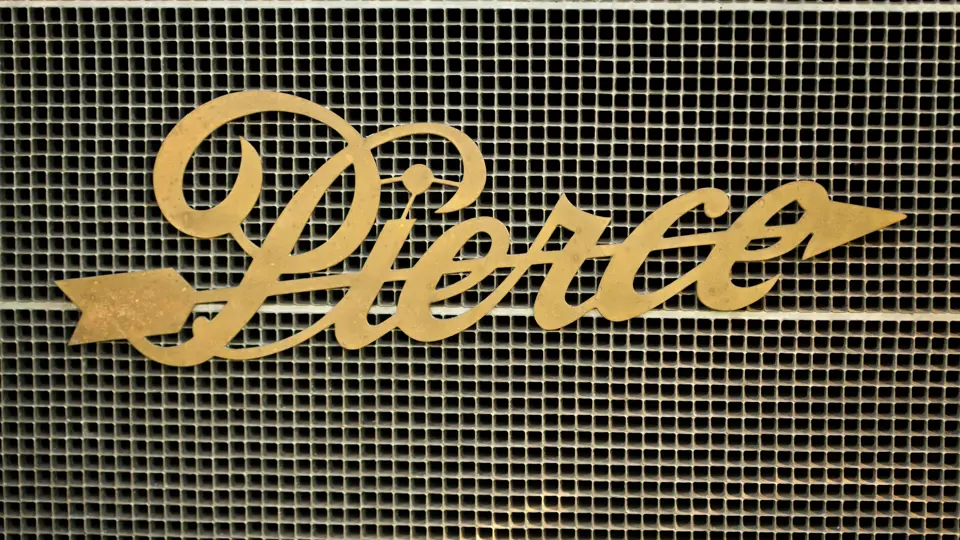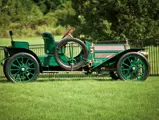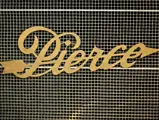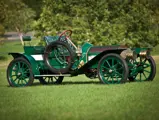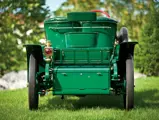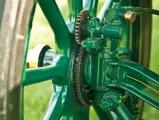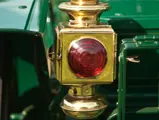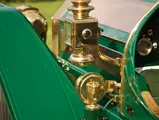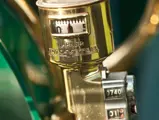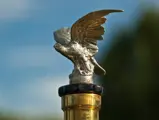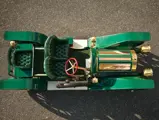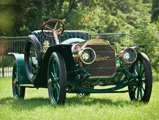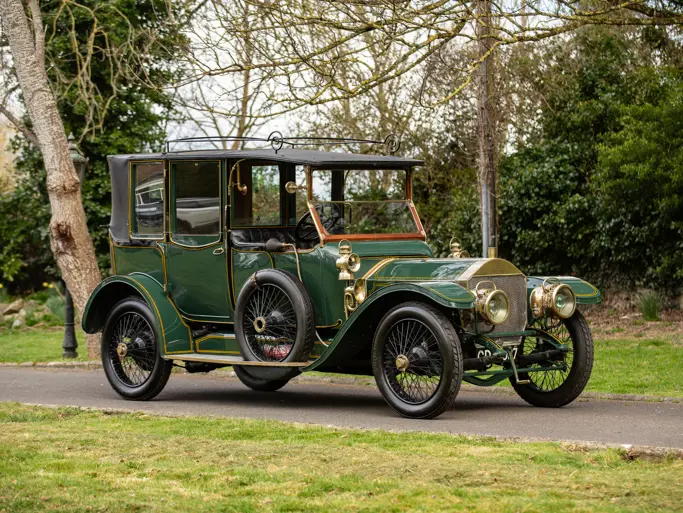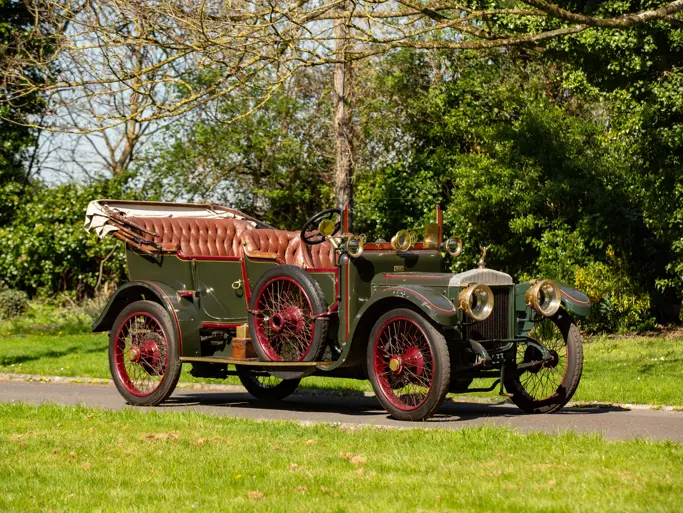Model UU. 36 hp, 386.5 cu. in. T-head six-cylinder engine, four-speed manual transmission, solid front axle with semi-elliptic leaf springs and live rear axle with three-quarter elliptic leaf springs, and two-wheel mechanical drum brakes. Wheelbase: 119 in.
• Offered from the collection of George Grew
• Ready to show or tour
For the first three decades of America’s automobile century, prestige was spelled with three Ps: Packard, Peerless, and Pierce-Arrow. Packard arose in 1899 from a customer’s disappointment with his newly-purchased Winton, and Peerless in 1900 from a company that made clothes wringers. Pierce-Arrow was the youngest, entering the automobile market in 1901, from a history that included household items like bird cages.
George N. Pierce was a bicycle manufacturer. His industrial experience, however, was far more diverse, beginning as a partner in Heintz, Pierce and Munschauer, a Buffalo, New York company that made bird cages. As the nineteenth century progressed, the firm branched out into ice boxes and bath tubs. After Pierce bought out his partners in 1872, he renamed the company for himself and embarked on pedal-powered transportation. Taking notice of the interest in self-propelled vehicles, he built a steam car in 1900.
By that November, a gasoline-powered car was operating, and in 1901, the manufacturing of a DeDion-engined “Motorette” began. A defining moment in the evolution of the Pierce automobile came in 1904, with the introduction of the four-cylinder Great Arrow. Pierce’s son Percy drove one in the inaugural 1905 Glidden Tour, winning the reliability contest hands down. Pierces took the Glidden trophy for the next four events. “Pierce” and “Arrow” became so linked in the public eye that both car and company were renamed Pierce-Arrow in 1909. By then, Pierce-Arrows, which sold for $3,050 to $7,200, had joined Packard and Peerless in comprising the “Three Ps” of luxury American motor manufacture.
The early Pierce cars were principally the work of David Fergusson, a British-born engineer of Scots ancestry. He joined Pierce in 1901 and laid out the design for the company’s Motorette and Arrow models. In 1905, as the chief engineer, he toured Europe with Manufacturing Vice-President Henry May. They visited all the British and Continental automobile factories, looking at design trends and manufacturing methods. In particular, they noted the move to larger cars with six-cylinder engines. This would set the pattern for Pierce-Arrow cars for the next 15 years.
The first six-cylinder Pierce was the Model 65-Q, introduced in 1907. Like the fours that preceded it, the new powerplant was of T-head configuration, displacing an impressive 648 cubic inches. A smaller, 40 horsepower six, the 40-S, was added in 1908. The last Pierce fours were built in 1909, but that year there were three sixes of 36, 48, and 60 horsepower.
This 36 horsepower Model UU Pierce-Arrow was the last car purchased by George Grew during his lifetime. He bought it from Bob Robinson, a professional restorer in Schwenksville, Pennsylvania, in 2004. It had been discovered in the 1940s by Warren Kraft on Long Island. Winford Smith made the car operable, mounting a serviceable but inauthentic body. After passing through the collection of James Bragg in Connecticut, it was purchased by Robinson for his personal collection. In 2002, he completed the painstaking and thorough restoration that it wears today, including the body, which is an exact replication of the 1909 Pierce Runabout.
According to George Grew’s daughter Janice, the Pierce Runabout was “the final car love of his life. As a former midget car driver back in the 1940s and ’50s, which he gave up when he married my mom, this car was the best combination of a beautiful and desirable antique car with plenty of speed. Despite an old race car superstition against driving green cars, which he always repeated, he bought this green 1909 Pierce and loved it.”
It is easy to see why. Low and lithe, it is the epitome of a pre-1910 sports car, with just enough bodywork to perform its intended function. The front view is as bold as brass, with a brass radiator with Pierce-Arrow script, brass Rushmore headlamps with Solar sidelamps, and a flying eagle on the radiator cap. The headlamps, hood, and steering column are highlighted with copper plating, and the chassis is pinstriped in gold on the bold green background. Matching green buttoned leather upholsters the seats, and diamond-pattern white rubber lines the running boards. The engine compartment shines, too, with plenty of polished copper and brass.
The car is outfitted for convenient driving and touring, with 12-volt electric starting and alternator. Not only is it eager for the road, it’s not shy on the show field either. It made an invitational appearance at the Newport Concours d’Elegance in 2009 and received the “Best Sports Car-American” award. Recently recommissioned and detailed, this Pierce-Arrow is ready to make its way into the heart of a new enthusiast who will show it, exercise it, and love it the way George Grew did.

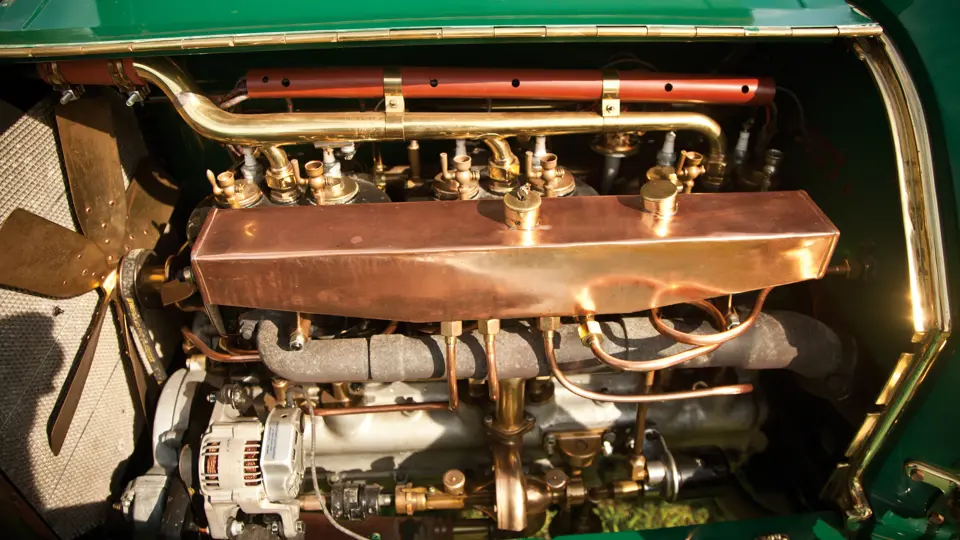
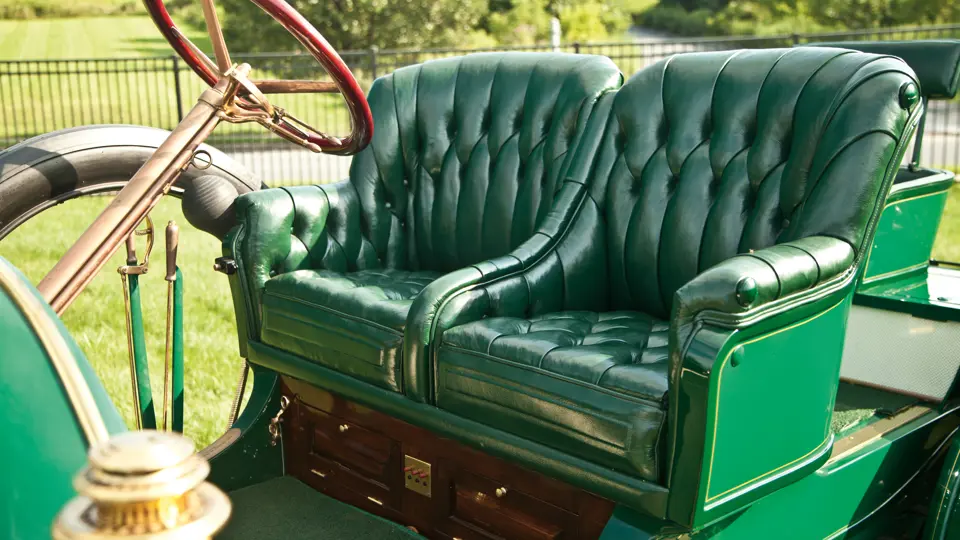

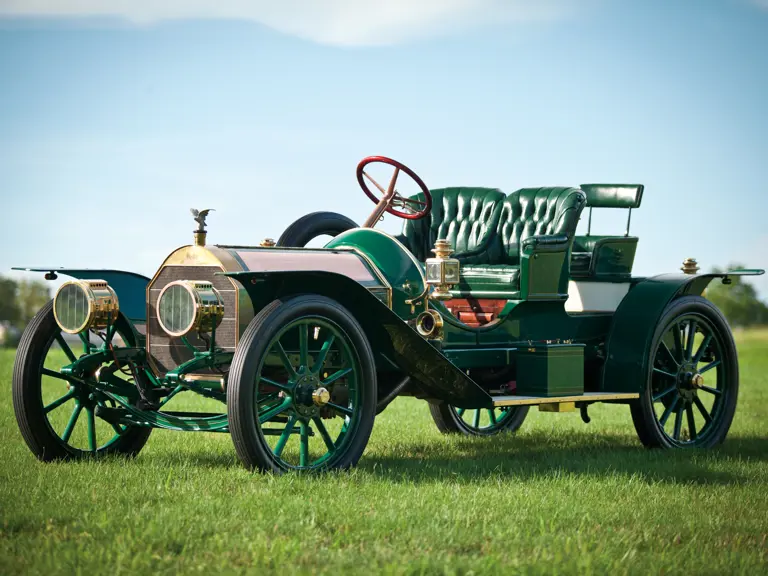

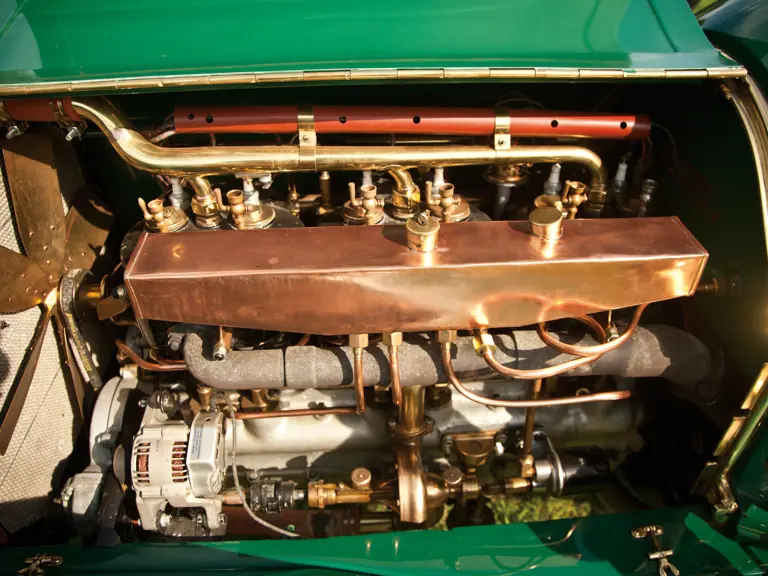
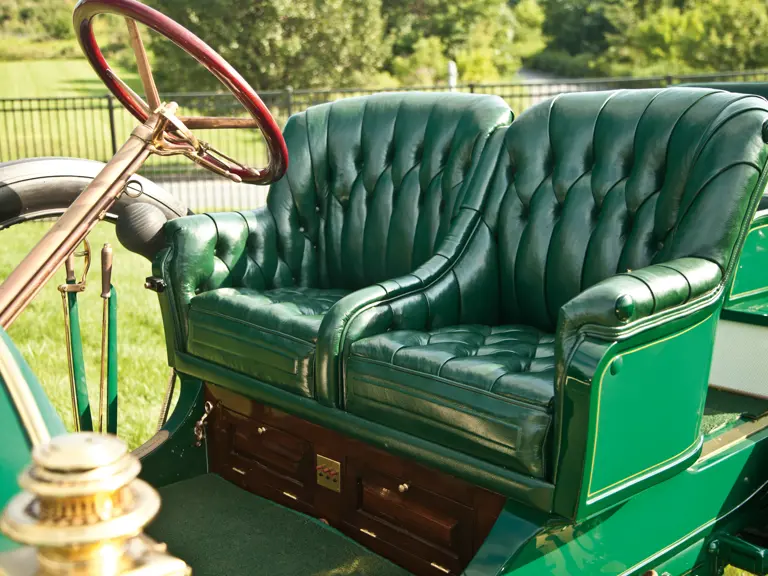
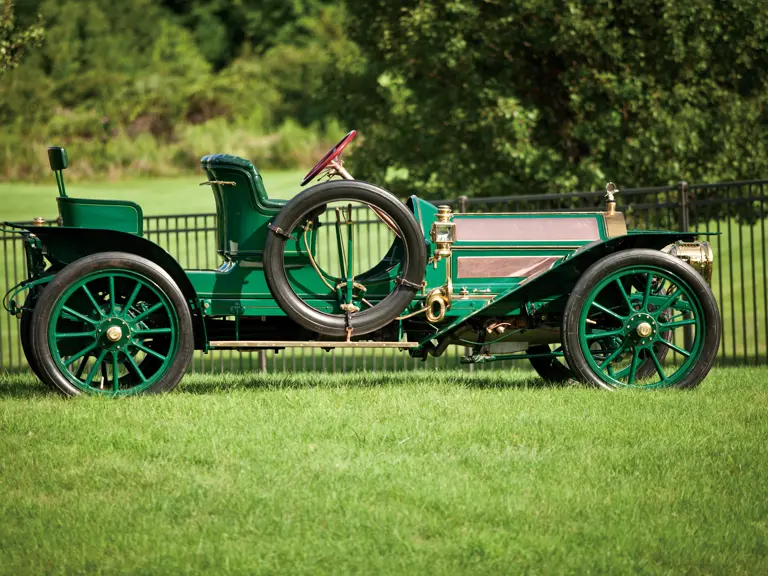
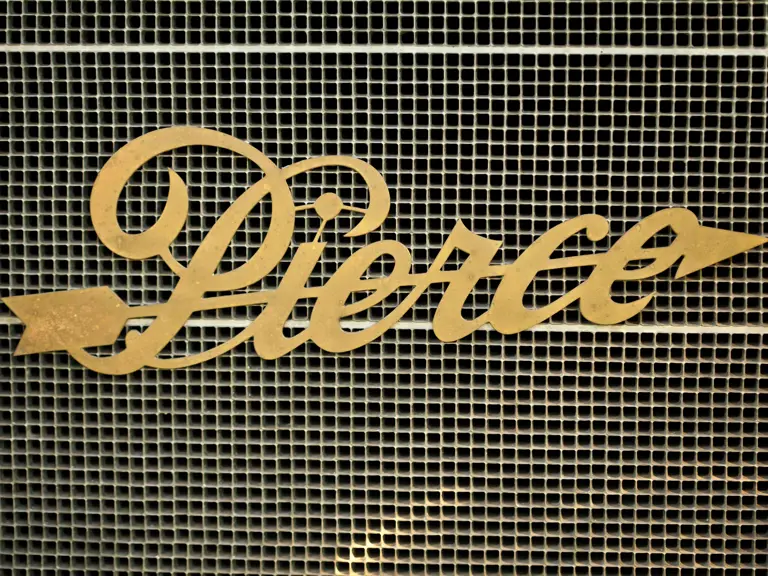
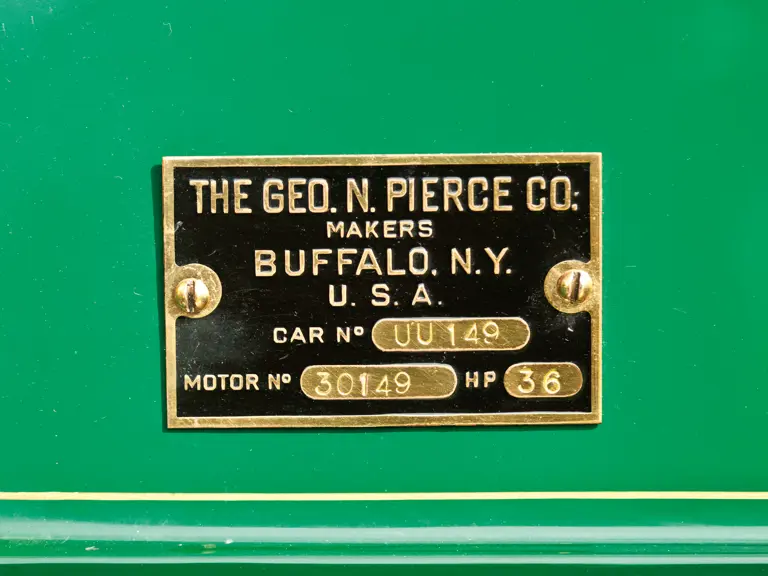
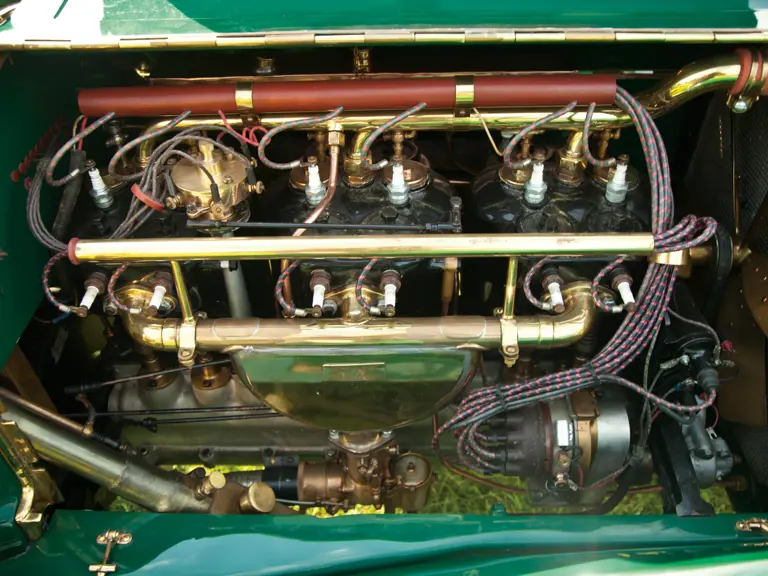
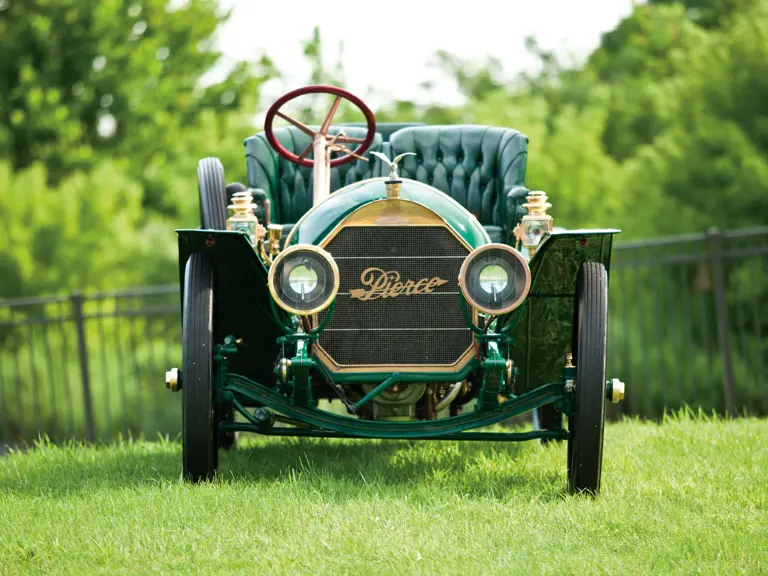
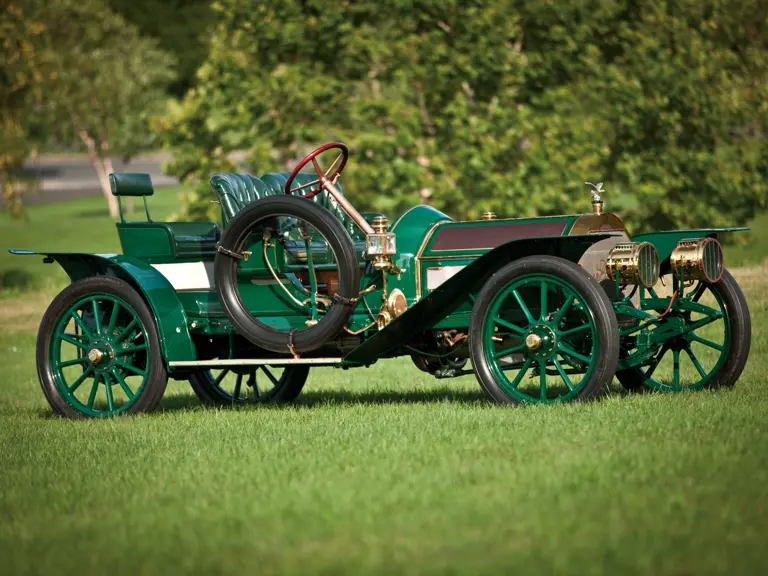
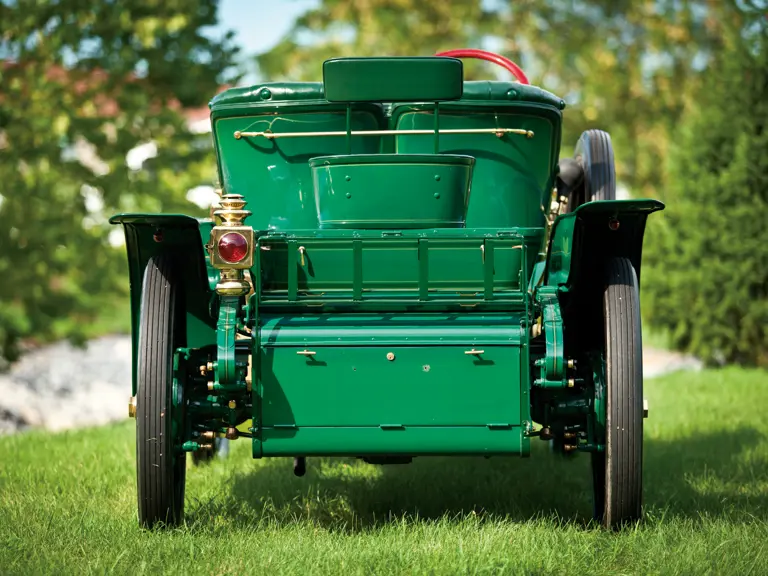
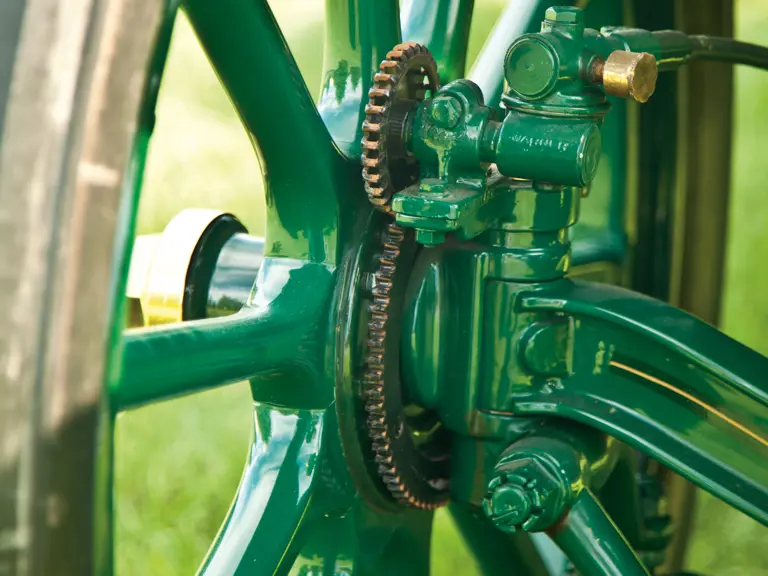
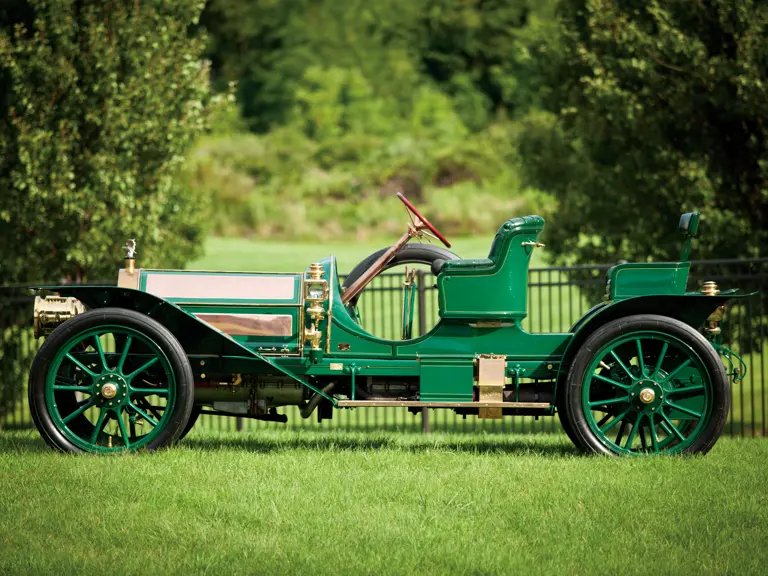
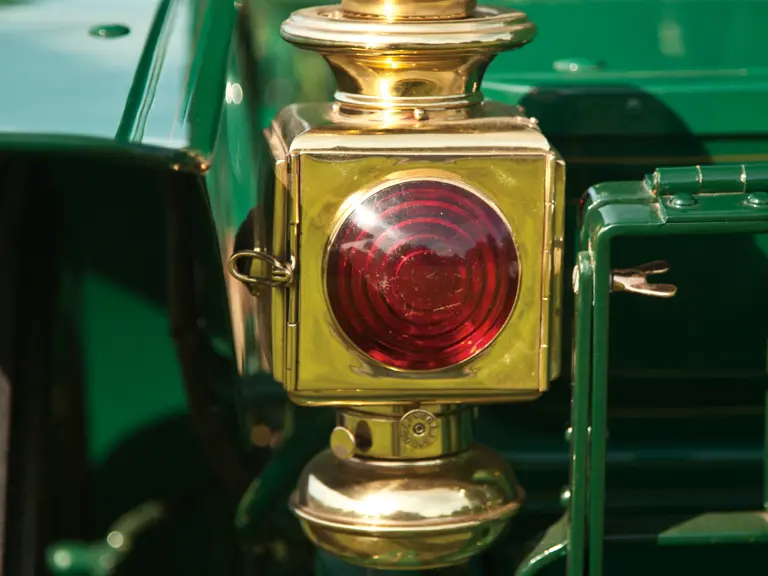
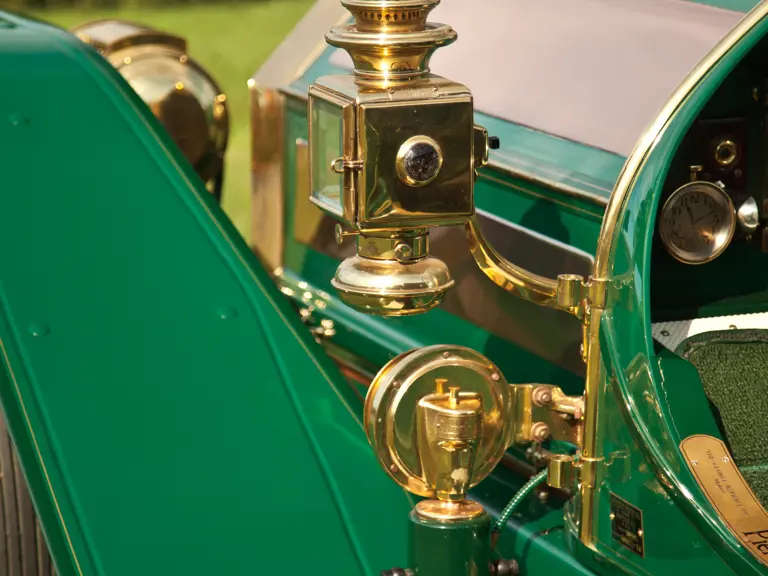
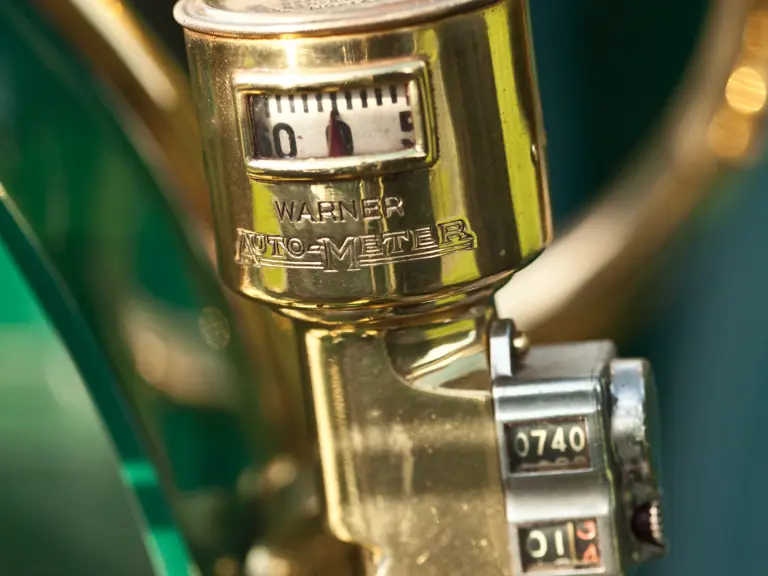
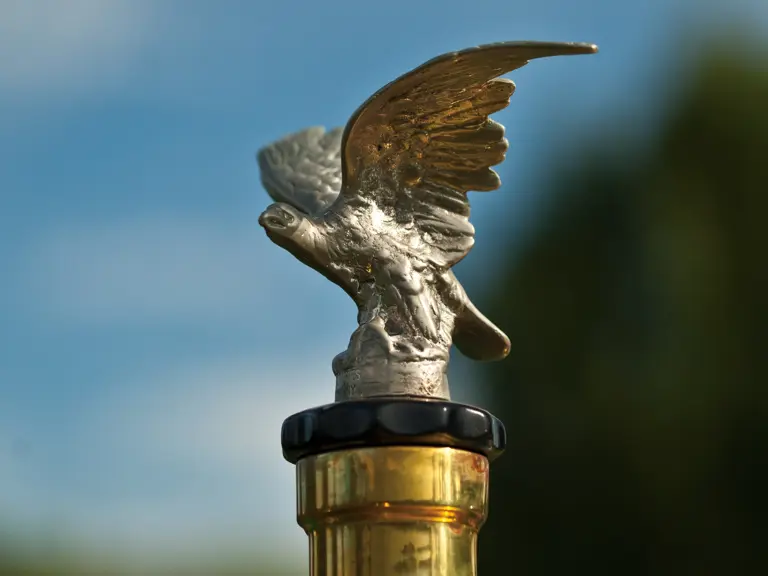
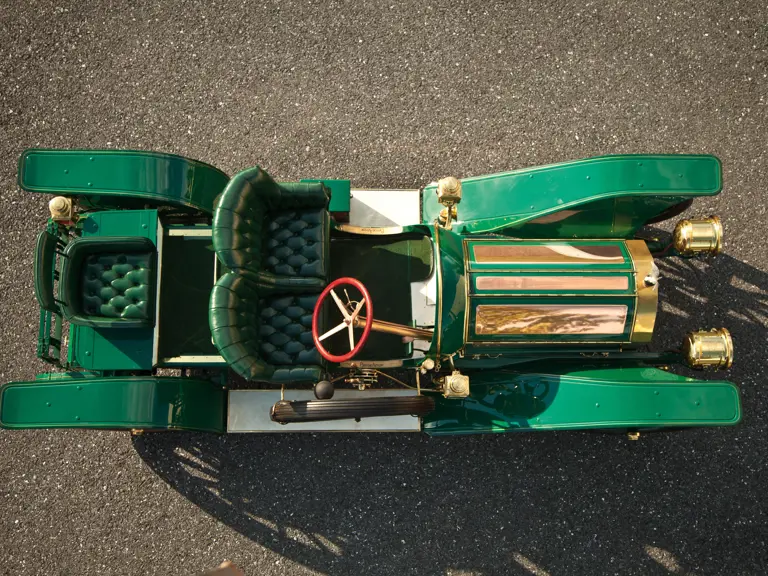
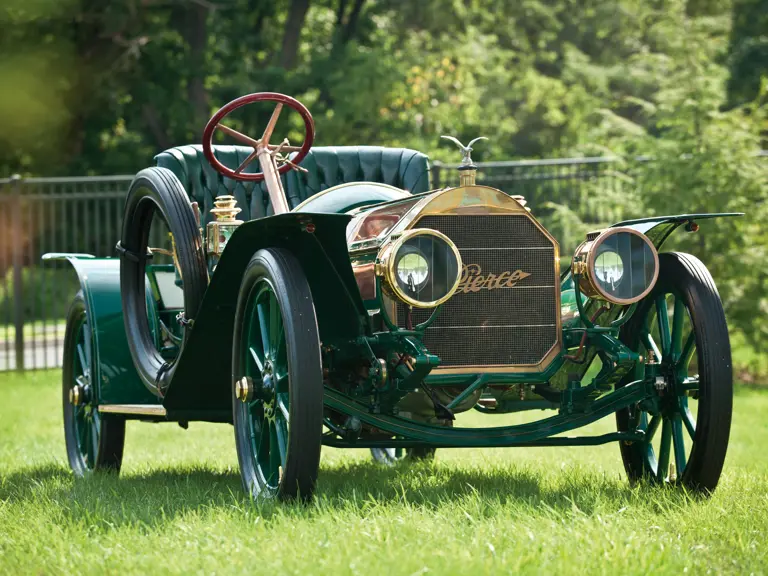
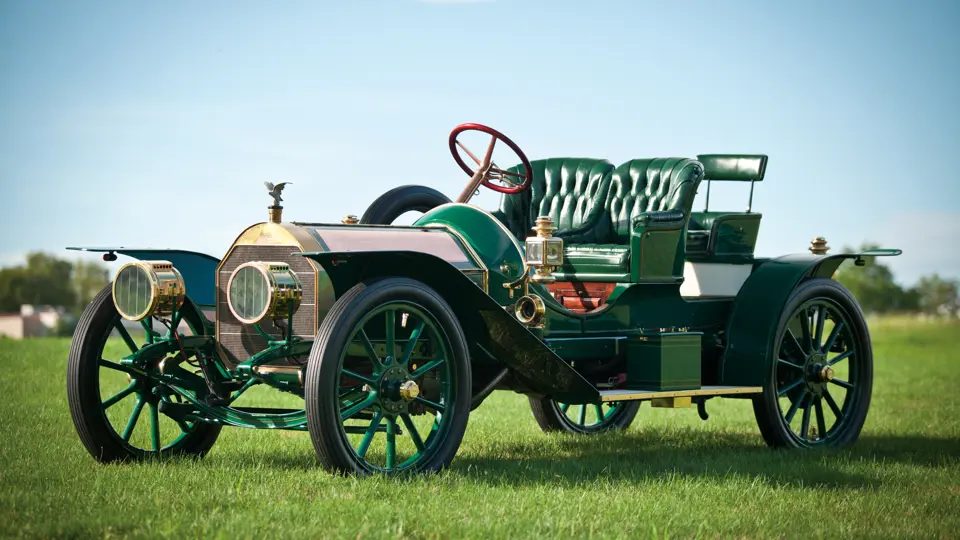
 | Hershey, Pennsylvania
| Hershey, Pennsylvania

